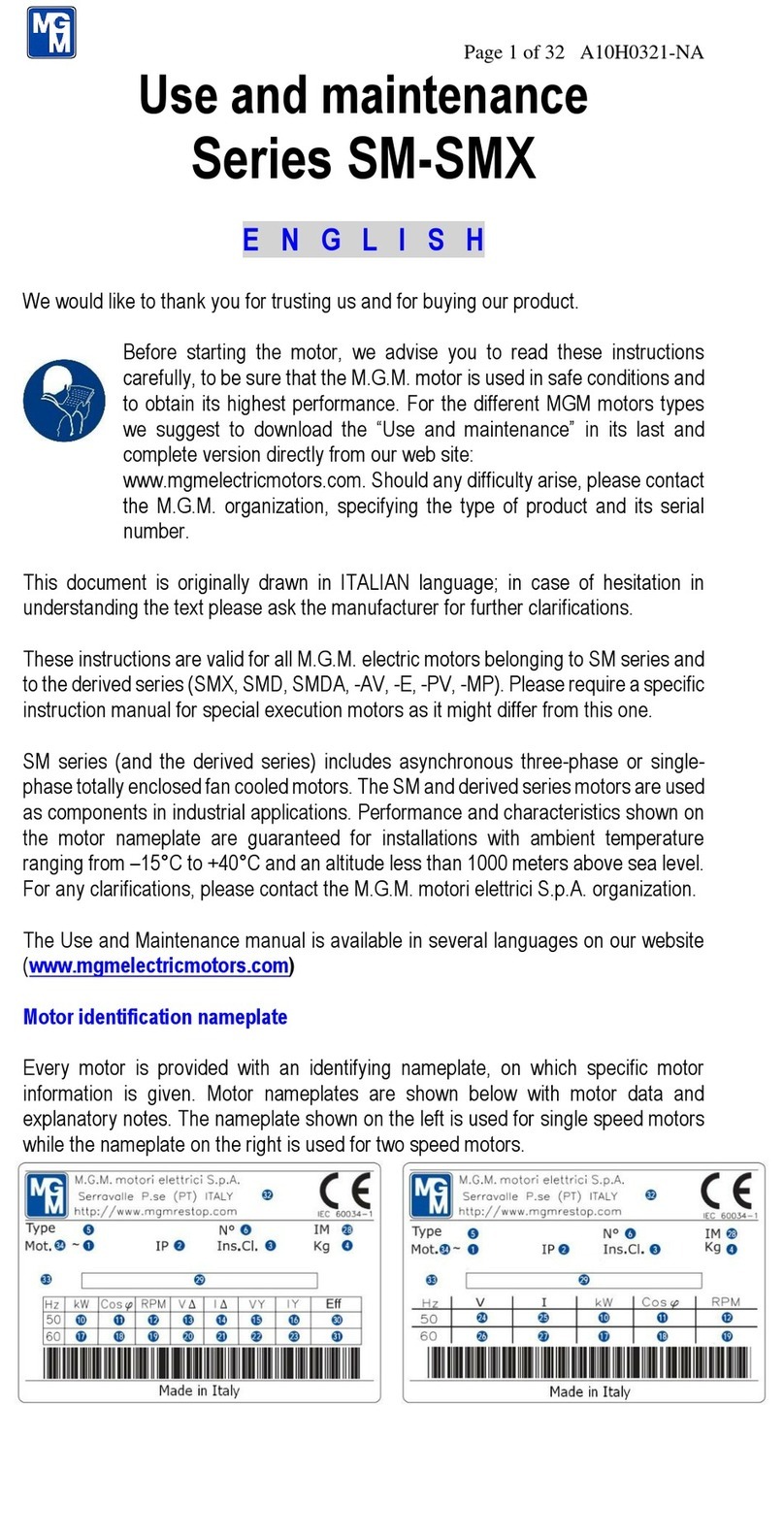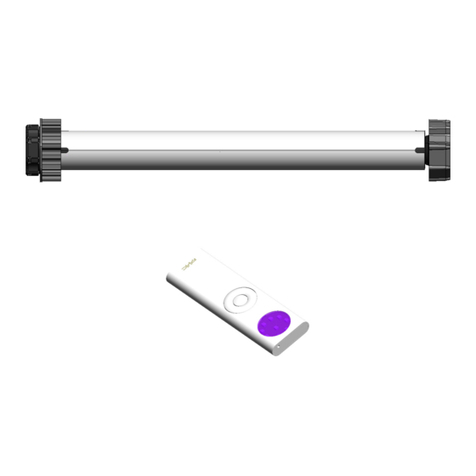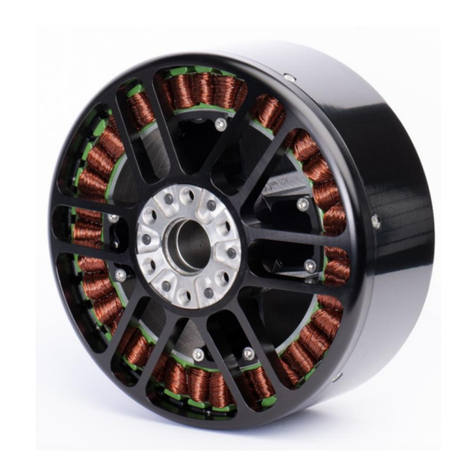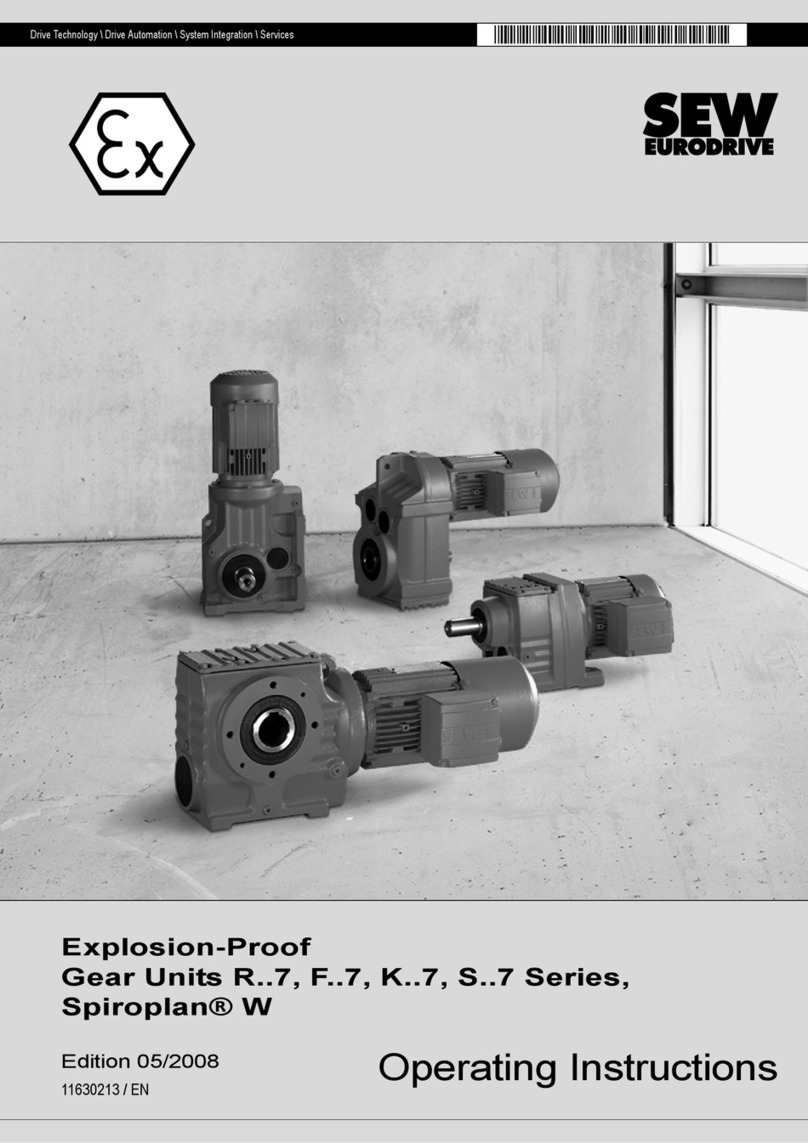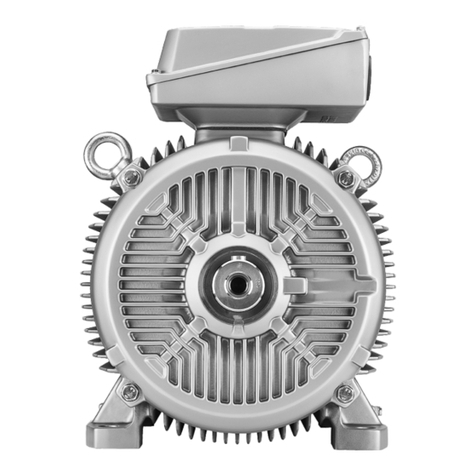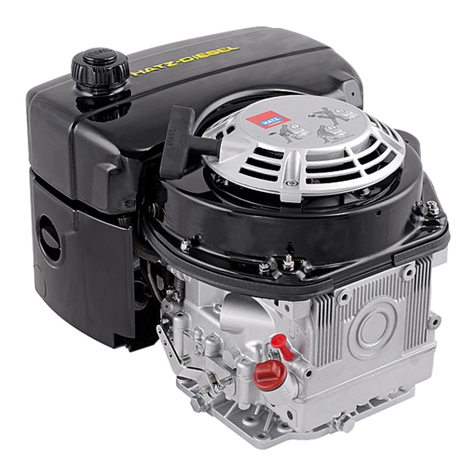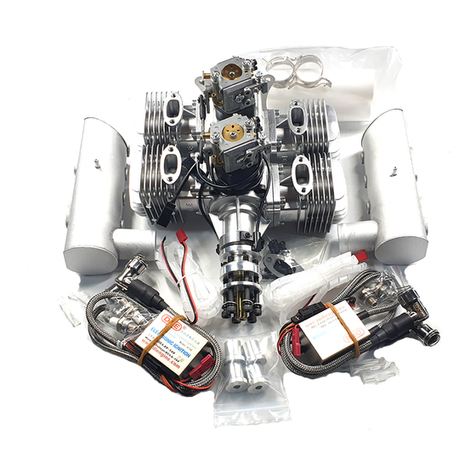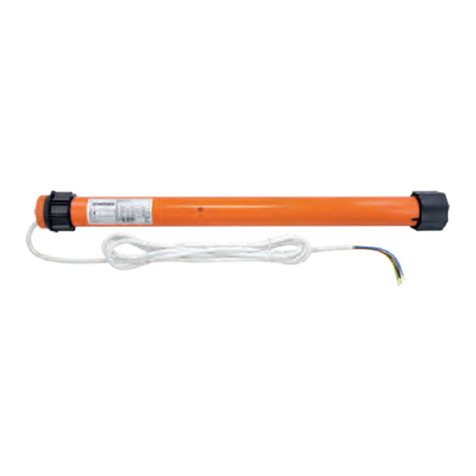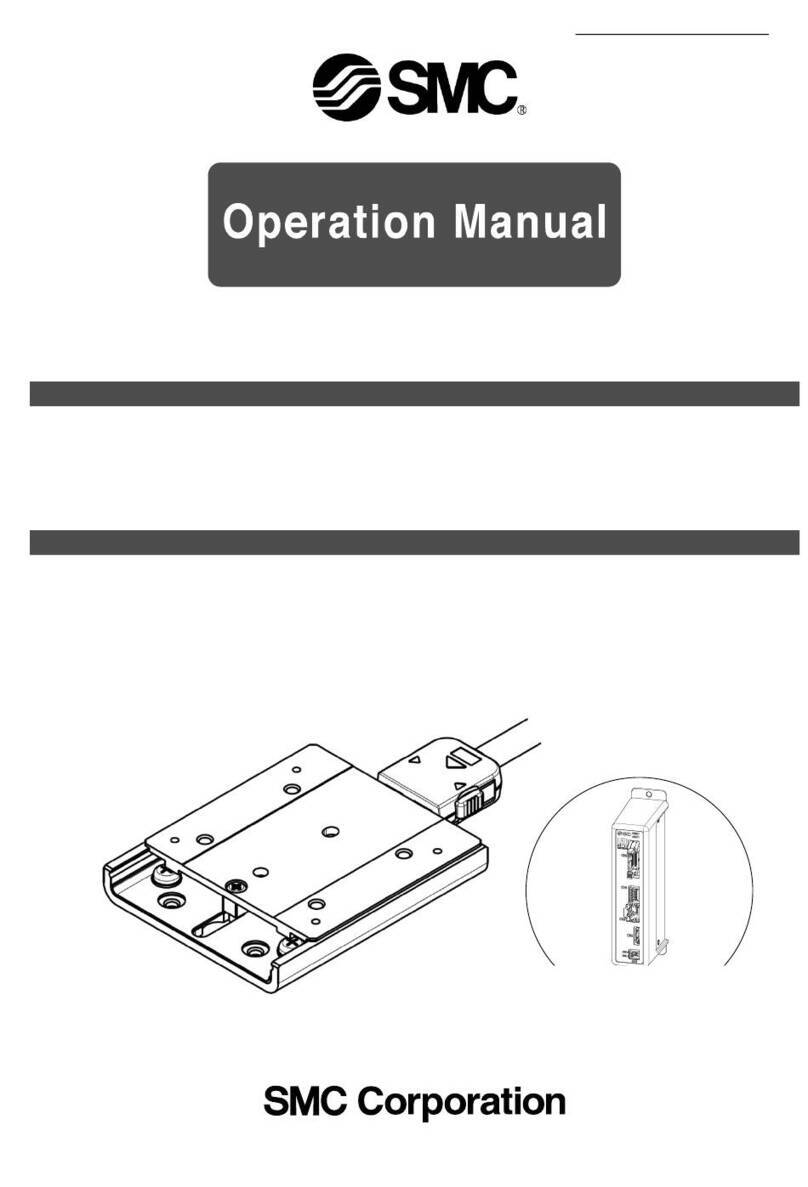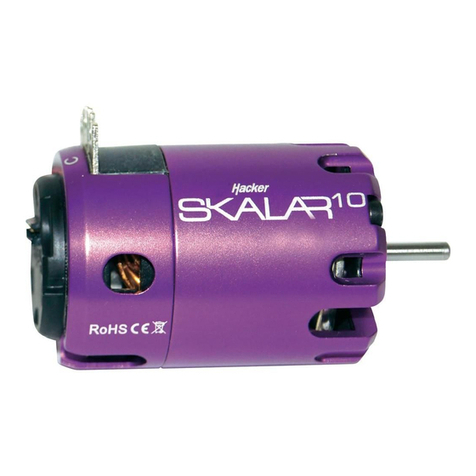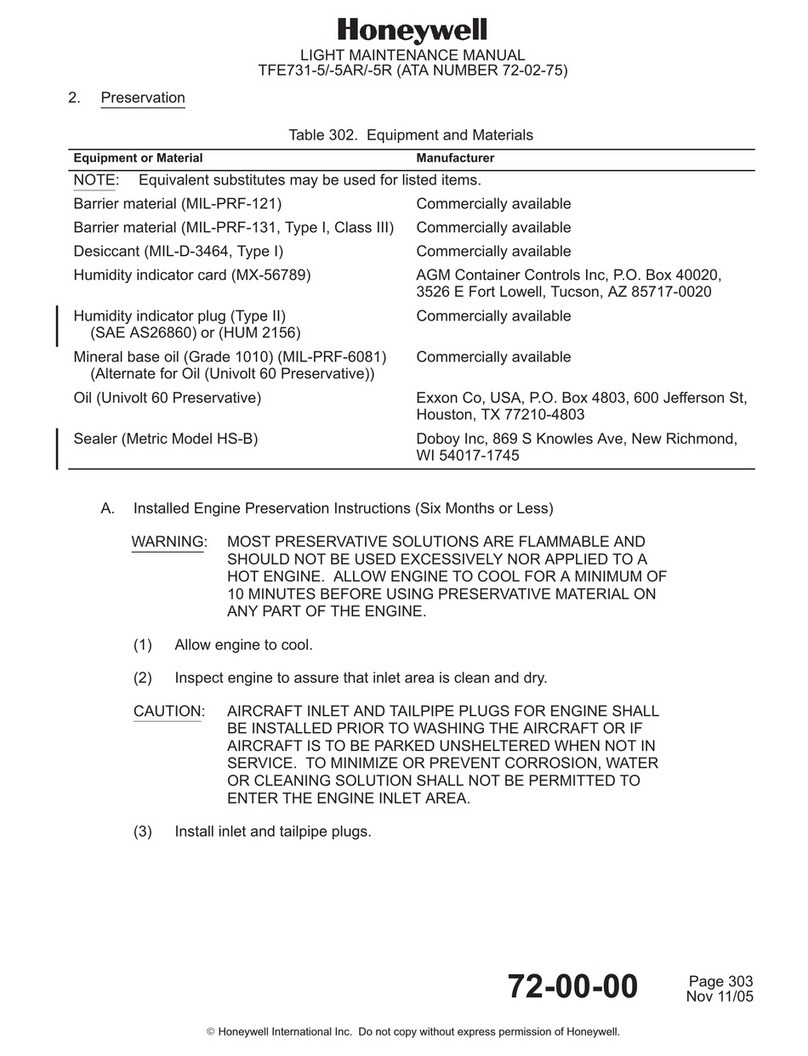Hexagon 488LPI User manual

Propane Autogas
Engine Electrical and Sensors
Service Manual
DSM.0053 Ver. 1.0
May 26, 2022
PRINTED AND DOWNLOADED COPIES ARE UNCONTROLLED

Hexagon Agility Inc. Copyright ©2022. All Rights Reserved.
DSM.0053 Ver. 1.0 05/26/2022
488LPI Propane Autogas Engine
Electrical and Sensors Manual
Page 2 of 31

Preface
This manual is designed as a support document for trained technicians in the maintenance and service
procedures of the 488LPI™ propane autogas engine and fuel system provided by Hexagon Agility®.
No attempt shall be made to install, maintain, or repair this product until this manual and all referenced supporting
documentation have been read and fully understood.
Original Equipment Manufacturer (OEM) parts not serviced by Hexagon Agility®may be obtained by contacting
Freightliner Custom Chassis Corporation or Thomas Built Buses.
Fuel system warranty or non-warranty product support may be obtained by calling or emailing Hexagon Agility®
Customer Care and Technical Services (CCTS).
Please provide your name, phone number, email address, and complete vehicle information: VIN, year,
make, model, mileage, unit number, vehicle owner, and current vehicle location. A service advisor will
contact you to arrange vehicle repair or ship a part.
All parts must adhere to the accepted standards and ratings as specified by Hexagon Agility®. Use of
any part that is not approved by Hexagon Agility®is not recommended and may compromise the integrity
and safety of the system.
Do not remove components from original packaging until necessary. Any components that are to be
reinstalled must be thoroughly cleaned, inspected, and stored in a satisfactory manner until
reinstallation.
DSM.0053 Ver. 1.0 05/26/2022
488LPI Propane Autogas Engine
Electrical and Sensors Manual
Page 3 of 31

Table of Contents
Preface
Acronyms
Safety
Warning and Signal Words Used in this Manual
Qualified Personnel
Engine Harness Component Diagram
Repair Procedures
Camshaft Position (CMP) Sensor
Crankshaft Position (CKP) Sensor
Engine Control Module (ECM)
Engine Coolant Temperature (ECT) Sensor
Engine Harness
EVAP Purge Solenoid
Fuel By-Pass Solenoid
Fuel Pressure/Temperature (FPT) Sensor
Ignition Coil
Manifold Absolute Pressure (MAP) Sensor
Mass Air Flow (MAF) Sensor
Spark Plug Inspection
Spark Plug Wire Inspection
Torque Security Module (TSM)
References
Electrical Component and Sensor Torque Specifications
Ignition System Specifications
DSM.0053 Ver. 1.0 05/26/2022
488LPI Propane Autogas Engine
Electrical and Sensors Manual
Page 4 of 31

Acronyms
CKP
crankshaft position sensor
CMP camshaft position sensor
ECM electronic control module
ETC electronic throttle control sensor
ECT
engine coolant temperature sensor
EVAP
evaporative emissions
FPT
fuel pressure/temperature sensor
LPG
liquid propane gas
LPI Liquid Propane Injection
MAP manifold absolute pressure sensor
MAF
mass air flow sensor
TSM
torque security module
DSM.0053 Ver. 1.0 05/26/2022
488LPI Propane Autogas Engine
Electrical and Sensors Manual
Page 5 of 31

Safety
Hexagon Agility® provides safety guidelines to ensure the safety of personnel servicing and / or operating liquid
propane gas1(LPG) equipment. All personnel involved must adhere to industry standards, specialized training,
and all federal, state, and municipal laws and regulations.
Hexagon Agility®minimizes potential hazards through state-of-the art design and testing practices. Always
observe the procedures and recommendations of this manual.
Due to the presence of high-pressure and flammable fuel, LPG fuel systems are a form of hazardous energy
storage.
Warning and Signal Words Used in this Manual
WARNING indicates a hazardous situation which, if not avoided, could result in death
or serious injury.
CAUTION indicates a hazardous situation which, if not avoided, could result in minor or
moderate injury.
NOTICE is used to address practices not related to physical injury, such as best
practices or tips to help an operation or procedure go smoothly and prevent equipment
damage.
Product feature directly affects:
Safety of vehicle users, people nearby and maintenance personnel, or
Regulatory compliance.
Qualified Personnel
LPG systems must be maintained and inspected exclusively by trained personnel with qualifications in
accordance with the applicable codes.
Individuals involved in any aspect of LPG fuel system maintenance, emergency response, servicing or
testing must be properly trained. Individuals who are not trained are not permitted to service, maintain,
test, or inspect a system.
1LPG used for automotive applications is often referred to as “propane autogas.”
Critical
Characteristic
DSM.0053 Ver. 1.0 05/26/2022
488LPI Propane Autogas Engine
Electrical and Sensors Manual
Page 6 of 31

Engine Harness Component Diagram
C10
Oil
Pressure
Sensor
FRONT
C12
Camshaft
Position
Sensor
C17a
Ignition
Coil 1
C17b
Ignition
Coil 3
C17c
Ignition
Coil 5
C19a
Ignition
Coil 2
C17d
Ignition
Coil 7
C19b
Ignition
Coil 4
C19c
Ignition
Coil 6
C19d
Ignition
Coil 8
C14
Engine Coolant
Temperature
Sensor
C22
Fuel
Temperature/
Pressure
Sensor
C26
A/C
Compressor
Clutch 1
C27
A/C
Compressor
Clutch 2
C11
Crankshaft
Position
Sensor
C28
Bulkhead
Connector
C16
F
uel Injector
Harness
C6
Mass Air Flow
Sensor
C21
Ground
Ring
C20
Ground
Ring
C31
Fuel
Supply
Solenoid
C32
Fuel
By-Pass
Solenoid
C7
Manifold
Absolute
Pressure
Sensor
C9
Electronic
Throttle Control
Sensor
C15B
LH Pre-
Cat.
HEGO
Sensor
C15A
RH Pre-
Cat.
HEGO
Sensor
C4
Torque
Security
Module
C5-A
CAN 1
Terminal
Resistor
C5-B
CAN 2
Terminal
Resistor
ECM J1-C
(Gray)
ECM J1-B
(Brown)
ECM J1-A
(Black)
DSM.0053 Ver. 1.0 05/26/2022
488LPI Propane Autogas Engine
Electrical and Sensors Manual
Page 7 of 31

Repair Procedures
FRONT
DSM.0053 Ver. 1.0 05/26/2022
488LPI Propane Autogas Engine
Electrical and Sensors Manual
Page 8 of 31

Camshaft Position (CMP) Sensor Replacement
DESCRIPTION AND OPERATION
The Camshaft Position (CMP) Sensor uses electromagnetic field variations to detect Camshaft
Sprocket rotation and speed to report Camshaft position to the ECM (Electronic Control Module).
The CMP Sensor bolts to the Front Engine Cover and connects to the Engine Wiring Harness.
REMOVAL PROCEDURE
1. Secure vehicle on an approved lift and
lift vehicle.
2. Verify engine is off.
3. Disconnect CMP Sensor Electrical
Connector (2) from Engine Harness (3).
Figure 1
4. Remove CMP Sensor Retaining Bolt
(not shown)from Engine Front Cover
(1). Figure 1
5. Remove CMP Sensor from Engine
Front Cover (1). Figure 1
6. Inspect CMP Sensor and O-ring for
wear, cracks or other damage.
CMP Sensor must be replaced if O-
ring is damaged.
INSTALLATION PROCEDURE
1. Lubricate CMP Sensor O-ring with
clean engine oil.
2. Install CMP Sensor in Front Engine
Cover (1). Figure 1
3. Install and tighten CMP Sensor
Retaining Bolt (not shown). Refer to
Electrical Component & Sensor Torque
Specifications.
4. Connect CMP Sensor Electrical
Connector (2) to Engine Harness (3).
Figure 1
5. Lower vehicle.
6. Verify proper operation.
2
Figure 1:
Camshaft (CMP) Sensor Electrical Connector
location (2), Engine Harness (3), Engine Front
Cover (1)
1
3
DSM.0053 Ver. 1.0 05/26/2022
488LPI Propane Autogas Engine
Electrical and Sensors Manual
Page 9 of 31

Crankshaft Position (CKP) Sensor Replacement
DESCRIPTION AND OPERATION
The Crankshaft Position (CKP) Sensor detects crankshaft rotation and speed by monitoring the
Crankshaft Reluctor Wheel to report crankshaft position to the ECM (Electronic Control Module).
The CKP Sensor bolts into the passenger side of the Engine Front Cover and connects to the
Engine Wiring Harness.
REMOVAL PROCEDURE
1. Secure vehicle on approved lift and
raise vehicle.
2. Verify engine is off.
3. Disconnect CKP Sensor Electrical
Connector (2) from Engine Harness (3).
Figure 1
4. Remove CKP Sensor Retaining Bolt
(not shown)from Engine Front Cover
(1). Figure 1
5. Remove CKP Sensor from Engine
Front Cover (1). Figure 1
6. Inspect CKP Sensor and O-ring (not
shown) for wear, cracks or other
damage.
CKP Sensor must be replaced if O-
ring is damaged.
2
Figure 1:
Camshaft (CKP) Sensor Electrical Connector
location (2), Engine Front Cover (1),
Engine Harness (3)
1
3
FRONT
DSM.0053 Ver. 1.0 05/26/2022
488LPI Propane Autogas Engine
Electrical and Sensors Manual
Page 10 of 31

INSTALLATION PROCEDURE
1. Lubricate CKP Sensor O-ring (not
shown) with clean engine oil.
2. Install CKP Sensor in Front Engine
Cover (1). Figure 1
3. Install and tighten CKP Sensor
Retaining Bolt (not shown). Refer to
Electrical Component & Sensor Torque
Specifications.
4. Connect CMP Sensor Electrical
Connector (2) to Engine Harness (3).
Figure 1
5. Lower vehicle.
6. Verify proper operation.
DSM.0053 Ver. 1.0 05/26/2022
488LPI Propane Autogas Engine
Electrical and Sensors Manual
Page 11 of 31

Engine Control Module (ECM) Replacement
DESCRIPTION AND OPERATION
The Engine Control Module (ECM) monitors and directs engine operation. The ECM connects to
the Engine Harness via three (3) electrical connectors and attaches to the Upper Intake Manifold
using three (3) bolts.
ECMs are unique to each vehicle and must be programmed according to Vehicle
Equipment Programming Stations (VEPS). Please contact Hexagon Agility®.
REMOVAL PROCEDURE
1. Secure vehicle.
2. Ignition OFF.
3. Disconnect ECM Engine Harness
Electrical Connectors (2) from Electronic
Control Module (ECM) (1). Figure 1
4. Remove three (3) ECM Mounting Bolts (4).
Figure 1.
5. Remove ECM (1) from Upper Intake
Manifold (6). Figure 2
INSTALLATION PROCEDURE
1. Install ECM (1) on Upper Intake Manifold (6)
using three (3) ECM Mounting Bolts (4) and
tighten. Figures 1 & 2. Refer to Electrical
Component & Sensor Torque
Specifications.
2. Connect three (3) Engine Harness Electrical
Connectors (2) to ECM Electrical Connector
locations (5).
Verify connector security locks are
firmly in place. Figures 1 & 2
3. Verify proper operation.
2
Figure 1:
ECM (1), Engine Harness ECM Electrical Connectors
(2), Engine Harness (3), ECM Mounting Bolts (4)
1
3
4
Figure 2:
ECM (1), ECM Electrical Connector locations (5),
ECM Mounting Bolts (4)
6
4
1
5
DSM.0053 Ver. 1.0 05/26/2022
488LPI Propane Autogas Engine
Electrical and Sensors Manual
Page 12 of 31

Engine Coolant Temperature (ECT) Sensor Replacement
DESCRIPTION AND OPERATION
The Engine Coolant Temperature (ECT) Sensor measures coolant temperature using variable
resistance with temperature and sends readings to the Engine Control Module (ECM). The ECM
uses ECT data and inputs from other sensors to adjust fuel injection and ignition timing.
The ECT sensor attaches to the Engine Harness via a pigtail connector and threads into the
middle of the driver side Cylinder Head.
REMOVAL PROCEDURE
1. Secure vehicle.
2. Ignition OFF.
3. Drain cooling system below level of
Engine Coolant Temperature (ECT)
Sensor. Follow OEM procedure.
4. Disconnect ECT Sensor Pigtail
Electrical Connector (2) from Engine
Harness (5). Figure 1
5. Remove ECT Sensor (3) from driver
side Cylinder Head (1) using a socket.
Figure 1
Handle ECT Sensor carefully.
INSTALLATION PROCEDURE
1. Apply sealant to ECT Sensor Threads
(4). Figure 2
2. Install ECT Sensor (3) in driver side
Cylinder Head (1) using a socket.
Figure 1. Refer to Electrical
Component & Sensor Torque
Specifications.
3. Connect ECT Sensor Pigtail Electrical
Connector (2) to Engine Harness (5).
Figure 1
4. Fill cooling system. Follow OEM
procedure.
5. Clean any spilled fluids.
6. Verify proper operation.
2
Figure 1:
ECT Sensor Pigtail Electrical Connector (2),
ECT Sensor (3), Engine Harness (5),
Driver side Cylinder Head (1)
1
3
5
FRONT
Figure 2:
ECT Sensor (3), ECT Sensor Pigtail Electrical
Connector (2), ECT Sensor Threads (4)
3
2
4
DSM.0053 Ver. 1.0 05/26/2022
488LPI Propane Autogas Engine
Electrical and Sensors Manual
Page 13 of 31

Engine Harness Replacement
DESCRIPTION AND OPERATION
The Engine Harness connects the Electronic Control Module (ECM) to various electronic
components including engine sensors, ignition coils, fuel injectors, and relays. Additionally, the
Engine Harness connects to OEM vehicle wiring via the C28 Bulkhead Connector.
When making many engine repairs it may be necessary to partially or completely remove
the Engine Harness. This may require removing wire harness clips and retainers; always
replace any retaining devices to prevent harness contact with hot surfaces or rotating
parts and minimize rubbing and chafing of the harness.
When removing connectors, never pull on the wire harness; only pull on the connect
REMOVAL PROCEDURE
1. Secure vehicle.
2. Verify engine is cool.
3. Disconnect negative (–) Battery
Cable.
4. Disconnect Engine Harness from the
following passenger side engine
electrical components shown in
Figure 1:
a) C7 Manifold Absolute Pressure
(MAP) Sensor (1)
b) C30 EVAP Purge Solenoid (2)
c) C32 Fuel By-Pass Solenoid (3)
d) C9 Electronic Throttle Control
(ETC) (4)
e) C6 Mass Air Flow (MAF) Sensor
(5)
Figure 1:
Manifold Absolute Pressure (MAP) Sensor (1)
EVAP Purge Solenoid (2), Fuel By-Bass Solenoid (3),
Electronic Throttle Control (ETC) (4), and
Mass Air Flow (MAF) Sensor (5) connector locations
1
2
3
4
5
DSM.0053 Ver. 1.0 05/26/2022
488LPI Propane Autogas Engine
Electrical and Sensors Manual
Page 14 of 31

5. Disconnect C19 Connectors (6) from
Ignition Coils 2, 4, 6, 8. Figure 2
6. If equipped: Disconnect C26 and
C27 Air Conditioner Compressor
Clutch Connector(s) (not shown).
7. Disconnect Engine Harness from
driver side component connectors as
follows:
a. C17 Connectors (7) from Ignition
Coils 1, 3, 5, 7. Figure 3
b. C22 Fuel Rail Pressure/
Temperature (FTP) Sensor (8).
Figure 4
c. C14 Engine Coolant Temperature
(ECT) Sensor connector (9).
Figure 5
d. C16 Fuel Injector Harness
Connector (10). Figure 5
e. C31 Fuel Supply Solenoid
connector (11) at rear of manifold.
Figure 6
8. Raise vehicle.
9. Disconnect Engine Harness
connector from the following front
engine sensors:
a) C11 Crankshaft (CKP) Sensor (12).
Figure 7
b) C12 Camshaft (CMP) Sensor (13).
Figure 8
c) C10 Oil Pressure Sensor (14).
Figure 8
10. Remove Engine Harness Stud Cap
Retaining Bolts (15). Figure 9
11. Disconnect C15B LH and C15A RH
Pre-Catalyst Heated Exhaust Gas
Oxygen (HEGO) Sensor connectors
(16) & (17). Figure 10
12. Remove Retaining Bolts (18) securing
Engine Harness Ground Connector
Rings C20 and C21 (from rear of
Cylinder Heads. Figure 11
13. Lower vehicle.
Figure 2:
Passenger side Ignition Coil connector (6) locations.
NOTE: Intake Air Tube not shown for clarity.
4
6
FRONT
Figure 4:
Fuel Rail Pressure/Temperature (FTP) Sensor (8)
location
8
FRONT
Figure 3:
Driver side Ignition Coil connector (7) locations
7
FRONT
Figure 5:
Engine Coolant Temperature (ECT) Sensor
connector (9)
and C16 Fuel Injector Harness connector
(10)locations
10
9
FRONT
DSM.0053 Ver. 1.0 05/26/2022
488LPI Propane Autogas Engine
Electrical and Sensors Manual
Page 15 of 31

14. Disconnect C4 TSM Connector (20)
and J1-A, J1-B and J1-C ECM
Connectors (21). Figure 12
15. Disconnect C28 Bulkhead Connector
(22). Figure 13
16. Remove Zip Tie Stud Fastener
securing Engine Harness to Upper
Intake Manifold (not shown).
17. Remove all Nylon Push Fasteners AKA
“Christmas tree pins” and Zip Ties
securing Engine Harness carefully.
Inspect fasteners for damage and
save for Engine Harness
Installation.
18. Carefully remove Engine Harness.
Inspect Engine Harness for
damage.
INSTALLATION PROCEDURE
Apply dielectric grease to all
connectors and verify connector
security locks are firmly in place.
1. Connect C28 Bulkhead Connector
(22). Figure 13
2. Connect C4 Torque Security Module
(TSM) connector (20) and J1-A, J1-B
and J1-C ECM connectors (21).
Figure 12
3. Connect C31 Fuel Supply Solenoid
(11). Figure 6
4. Connect C16 Fuel Injector Harness
Connector (10). Figure 5
5. Connect C14 ECT Sensor connector
(9). Figure 5
6. Connect C22 FTP Sensor (8). Figure 4
7. Connect C17 Connectors (7) to
Ignition Coils 1, 3, 5, 7. Figure 3
8. If equipped: Connect C26 and C27
Air Conditioner Compressor Clutch
Connector(s) (not shown).
Figure 7:
Crankshaft Position (CKP) Sensor connector (12)
12
FRONT
Figure 8:
Camshaft Position (CMP) Sensor connector (13) and
Oil Pressure Sensor (14) locations
13
14
Figure 6:
Fuel Supply Solenoid connector (11) location
11
FRONT
Figure 9:
Engine Harness Cap Stud Retaining Bolt (15)
locations
15
DSM.0053 Ver. 1.0 05/26/2022
488LPI Propane Autogas Engine
Electrical and Sensors Manual
Page 16 of 31

9. Connect C19 Connectors (6) to
Ignition Coils 2, 4, 6, 8. Figure 2
10. Connect the following components
shown in Figure 1 to the Engine
Harness:
a) C7 MAP Sensor (1)
b) C30 EVAP Purge Solenoid (2)
c) C32 Fuel By-Pass Solenoid (3)
d) C9 ETC Sensor (4)
e) C6 MAF Sensor (5)
11. Raise vehicle.
12. Connect the following engine front
sensors to the Engine Harness:
a) C11 CKP Sensor (12). Figure 7
b) C12 CMP Sensor (13). Figure 8
c) C10 Oil Pressure Sensor (14).
Figure 8
13. Install Engine Harness Stud Cap
Bolts (15). Figure 9
14. Install Zip Tie Stud Fastener to
secure Engine Harness to Upper
Intake Manifold (not shown).
15. Install all Nylon Push Fasteners AKA
“Christmas tree pins” and Zip Ties to
secure Engine Harness.
Replace any missing/damaged
fasteners.
16. Connect C15B LH and C15A RH
HEGO Sensor connectors (16) &
(17). Figure 10
17. Install Engine Harness Ground
Connector Ring C20 and C21
Retaining Bolts (18) on rear of
Cylinder Heads. Figure 11. Refer to
Electrical Component and Sensor
Torque Specifications.
18. Lower vehicle.
19. Reconnect negative (–) Battery
Cable.
20. Verify proper operation.
Figure 11:
C20 & C21 Ground Ring Retaining Bolt (18) locations.
18
DS cylinder head
LS cylinder head
Figure 10:
LH and RH Pre-Cat Heated Exhaust Gas Oxygen
(HEGO) Sensor connectors (16) & (17)
17
16
Figure 12:
ECM Connector J1
-A, J1-B & J-
1C (21) and C4 Torque
Security Module (TSM) connector (20) locations
21
20
Figure 13:
C28 Bulkhead Connector (22) location
22
DSM.0053 Ver. 1.0 05/26/2022
488LPI Propane Autogas Engine
Electrical and Sensors Manual
Page 17 of 31

EVAP Purge Solenoid Replacement
DESCRIPTION AND OPERATION
The EVAP Purge Solenoid connects to the EVAP Emissions Cannister via a hose connection and
is also plumbed into the Upper Intake Manifold to consume any fuel system propane vapor.
The EVAP Purge Solenoid attaches to the Engine Harness using an electrical connector and is
mounted on a bracket on passenger side of the Upper Intake Manifold. Two Upper Intake Manifold
Retaining Nuts secure the EVAP Purge Solenoid Bracket to the Upper Intake Manifold.
REMOVAL PROCEDURE
1. Secure vehicle and verify engine is off.
2. Disconnect EVAP Purge Solenoid
Electrical Connector (2) from Engine
Harness. Figure 1
3. Disconnect EVAP Purge Hose (not
shown) from EVAP Purge Solenoid
(5)at Hose Connector (4). Figure 1
4. Disconnect EVAP Purge Solenoid to
Intake Line Fitting (6) from EVAP
Purge Solenoid (5). Figure 1
5. Remove EVAP Purge Solenoid (5)
from EVAP Purge Solenoid Bracket
Clip (7). Figure 1
INSTALLATION PROCEDURE
1. Install EVAP Purge Solenoid (5) on
Solenoid Bracket Clip (7). Figure 1
2. Connect EVAP Purge Solenoid to
Intake Line Fitting (6) to EVAP Purge
Solenoid (5). Figure 1
3. Connect EVAP Purge Hose (not
shown) to EVAP Purge Solenoid (5)
at Hose Connector (4). Figure 1
Apply dielectric grease to electrical
connector.
4. Connect EVAP Purge Solenoid
Electrical Connector (2) to Engine
Harness Connector (1). Figure 1
5. Verify proper operation.
2
Figure 1:
EVAP Purge Solenoid (5), Electrical Connector (2),
Hose Connector (4), Solenoid to Intake Line Fitting
(6), Bracket Clip (7), Upper Intake Manifold (1)
1
4
5
6
7
DSM.0053 Ver. 1.0 05/26/2022
488LPI Propane Autogas Engine
Electrical and Sensors Manual
Page 18 of 31

Fuel By-Pass Solenoid Replacement
INSTALLATION PROCEDURE
REMOVAL PROCEDURE
1. Secure vehicle outdoors in a safe location.
2. Bleed Fuel Lines. Refer to Fuel Line Bleed
Procedure.
3. Bring vehicle into service area and secure.
4. Remove Upper Intake Manifold. Refer to
Upper Intake Manifold Replacement.
5. Disconnect Fuel By-pass Solenoid (1)
Electrical Connector (3).Figure 1
6. Remove Fuel By-pass Solenoid Connector
Retaining Clip from the Fuel Distribution
Block Mounting Bracket.
7. Remove Fuel By-pass Solenoid Retaining
Nut (2). Figure 1
8. Slide Fuel By-pass Solenoid (3) off
Pressure Regulator on passenger side
Fuel Distribution Block (4). Figure 1
1. Install Fuel By-pass Solenoid (1) on
Pressure Regulator on passenger side
Fuel Distribution Block (4). Figure 1
2. Install Fuel By-pass Solenoid Retaining
Nut (2). Figure 1. Refer to Fuel System
Torque and Tightening Specifications.
3. Install Fuel By-pass Solenoid
Connector
Retaining Clip on
Fuel Distribution Block
Mounting Bracket.
4. Connect Fuel By-pass Solenoid (1)
Electrical Connector (3).Figure 1
5. Install Upper Intake Manifold. Refer to
Upper Intake Manifold Replacement.
6. Verify proper operation.
Figure 1:
Fuel By-pass Solenoid (1) with Electrical
Connector (3) and Retaining Nut (2);
Passenger side Fuel Distribution Block (4)
1
2
2
3
4
DSM.0053 Ver. 1.0 05/26/2022
488LPI Propane Autogas Engine
Electrical and Sensors Manual
Page 19 of 31

Fuel Pressure/Temperature (FTP) Sensor
Replacement
DESCRIPTION AND OPERATION
The Fuel Pressure/Temperature (FPT) Sensor provides critical real time fuel temperature and fuel
pressure readings to the Electronic Control Module (ECM). An ECM algorithm uses FPT data to
adjust base fuel calculation.
A malfunctioning FPT Sensor could result in incorrect fuel delivery to the engine. This can lead to
a rough running engine along with possible Check Engine Light or other Malfunction Indicator
Light illumination.
REMOVAL PROCEDURE
1. Secure vehicle outdoors in a safe
location.
2. Bleed Fuel Lines. Refer to Fuel Line
Bleed Procedure.
3. Bring vehicle into service bay and
secure.
4. Using a trim removal tool, walk Fuel
Injector Harness Connector Clip (not
shown) off its bracket.
5. Disconnect C16 Fuel Injector Harness
Connector and secure out of the way.
Refer to Engine Harness Schematic
and Connector End Views.
6. Disconnect Fuel Pressure/Temperature
(FPT) Sensor Electrical Connector (3).
Figure 2
7. Remove FPT Sensor (1) from driver
side Fuel Rail (2) using a deep well
socket and extension. Figures 1 & 2
Inspect FPT Sensor O-ring for
damage; replace O-ring as
necessary.
Figure 1:
Fuel Pressure/Temperature (FTP) Sensor (1) location
on driver side fuel rail
1
FRONT
DSM.0053 Ver. 1.0 05/26/2022
488LPI Propane Autogas Engine
Electrical and Sensors Manual
Page 20 of 31
Table of contents
